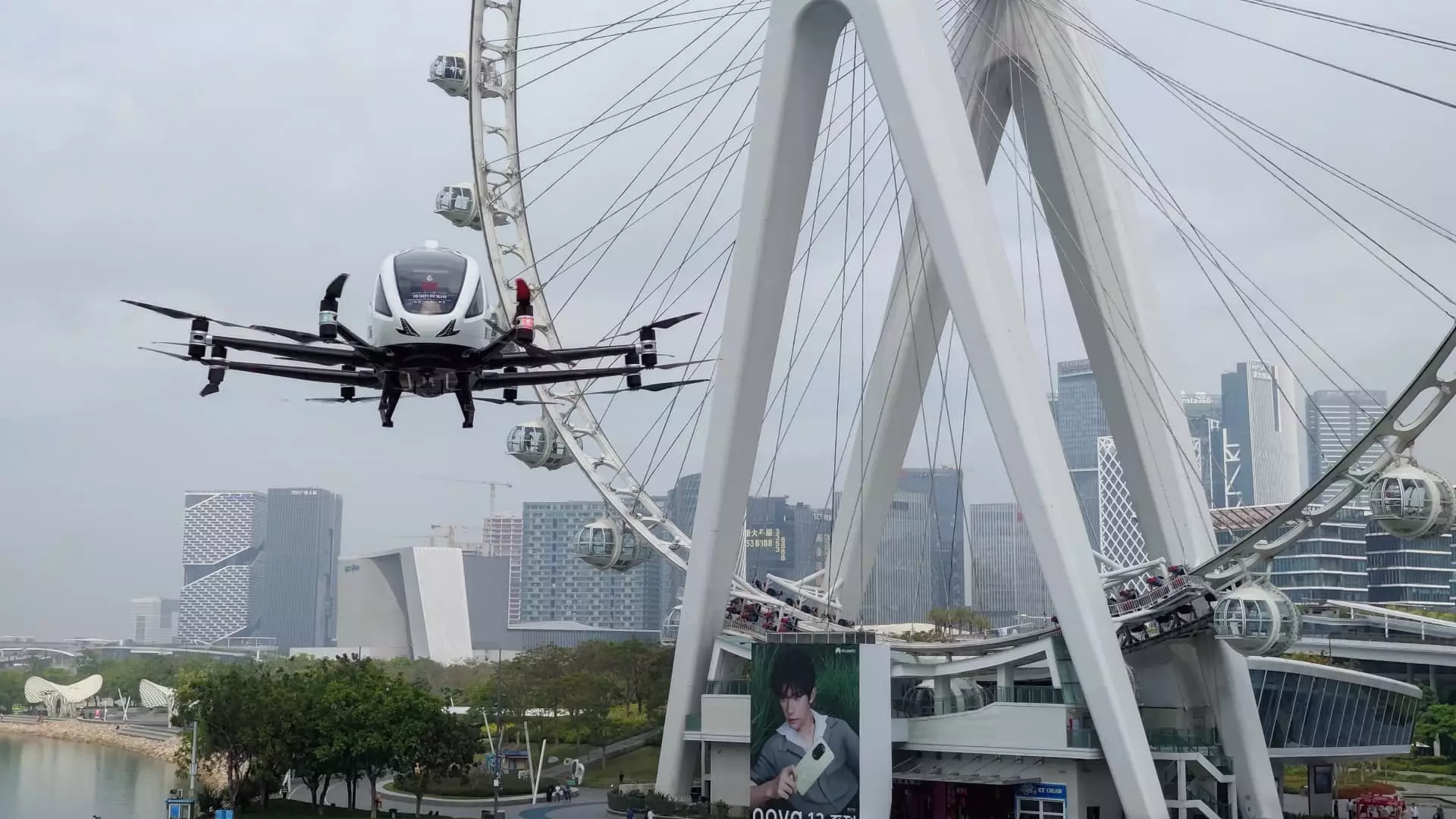The recent triumph of Ehang in securing certification for its eVTOL aircraft from Chinese regulators should be regarded with cautious scrutiny rather than unbridled enthusiasm. The claim that Ehang will command a 100% market share in China through 2027 raises alarm bells regarding the sustainability of this forecast. In an industry ripe for innovation, suggesting a monopoly establishes a detrimental precedent, allowing complacency to fester rather than fostering competition. Bank of America Analysts may see this as a boon, but such overconfidence overlooks one pivotal reality: the potential for disruptive technological advancements or overnight market changes that could easily shift the landscape.
Government Ascent or Overreach?
China’s rapid acceleration towards establishing a “low-altitude economy” serves as both a promising venture and a glaring warning sign. The injection of government resources into infrastructure for eVTOL operations is indicative of a state-backed laissez-faire attitude that can often border on overreach. While this presents avenues for growth, it simultaneously raises questions about the implications of government favoritism skewing the market. Foreign entities eyeing entry into China’s burgeoning eVTOL space could be deterred by a landscape heavily influenced by state interests, creating a situation where innovation becomes stifled rather than stimulated.
Tourism: An Unsustainable Lifeline?
Hotel vacancies and tourist attractions hopping on the eVTOL bandwagon may seem appealing, yet this reliance on tourism for immediate demand spells trouble. The turbulence in global tourism, magnified by unforeseen circumstances such as pandemics or geopolitical tensions, places an inherent risk on Ehang’s operational viability. The idea that every tourist site in China will rush to purchase five to ten aircraft raises skepticism about consumer demand trends. Moreover, a fleeting focus on tourism could divert attention from a broader strategy for sustainable market growth in urban air mobility. The sector may very well need to pivot towards commercial and private applications post-2025 to maintain a viable impact.
Pressure to Meet Expectations
Ehang’s projected surge in delivery volumes—442 units this year and 813 next year—may paint a rosy picture for investors, but it could also act as a double-edged sword. The underlying pressure on the company to achieve lofty sales targets introduces a substantial risk. Any disruption in production timelines or unforeseen technical issues could lead to consumer distrust and investor panic. As analysts predict revenue growth rates of over 100%, one cannot ignore the severe backlash that would ensue should Ehang falter in its mission. A consistent track record of accidents or safety violations could extend far beyond mere reputational damage; it could jeopardize the entire industry’s credibility.
A Perfect Storm of Regulations
Ehang’s strides in regulatory approval stand in stark contrast to the arduous journey U.S. companies face under the Federal Aviation Administration (FAA). Yet, the speed of regulation in China can pose its own risks. While the notion of a streamlined regulatory framework seems advantageous, this aggressive approach could lead to lax oversight and a culture where safety takes a back seat. Ehang’s prime position relies heavily on maintaining the delicately balanced relationship with regulators. Incidents resulting in injuries or mishaps could cause a knee-jerk reaction from authorities, prompting them to enact more stringent rules that stifle innovation and create barriers for all players in the eVTOL sector.
The Illusion of Profitability
Estimations suggesting a future demand for 200,000 eVTOL air taxis and potential yearly revenues reaching RMB 1.5 million per vehicle look attractive on paper. However, translating these figures into real-world profitability poses significant challenges. High operational costs, market saturation, and potential evaporating demand could implement a harsh reality check. Investors must approach these numbers with skepticism and consider the possibility that volatile economic conditions may alter the landscape far beyond current forecasts.
Examining the Urban Air Taxi Vision
The excitement surrounding urban air taxis raises important questions regarding practicality, demand, and safety. While the eVTOL concept is undeniably enticing, its real-world application necessitates a deeper understanding of urban density, air traffic regulations, and logistical frameworks that facilitate ease of use. The anticipated growth of urban air taxis should not overshadow the challenges associated with integrating these technologies into already-complicated transportation ecosystems. A promise to revolutionize urban commuting must be scrutinized under the lens of infrastructural readiness and comprehensive community input.
Facing the Future with Caution
Ehang has carved a unique niche within the burgeoning eVTOL sector. Still, it is imperative for stakeholders to adopt a cautious approach as they consider long-term sustainability and stability in an industry fraught with uncertainties. The impending trials and tribulations unearth significant vulnerabilities that could impact the future of Ehang and its competitors. A critical examination of the broader implications of its growth strategy—both nationally and globally—will prove essential as the world moves towards a new era of air mobility.

